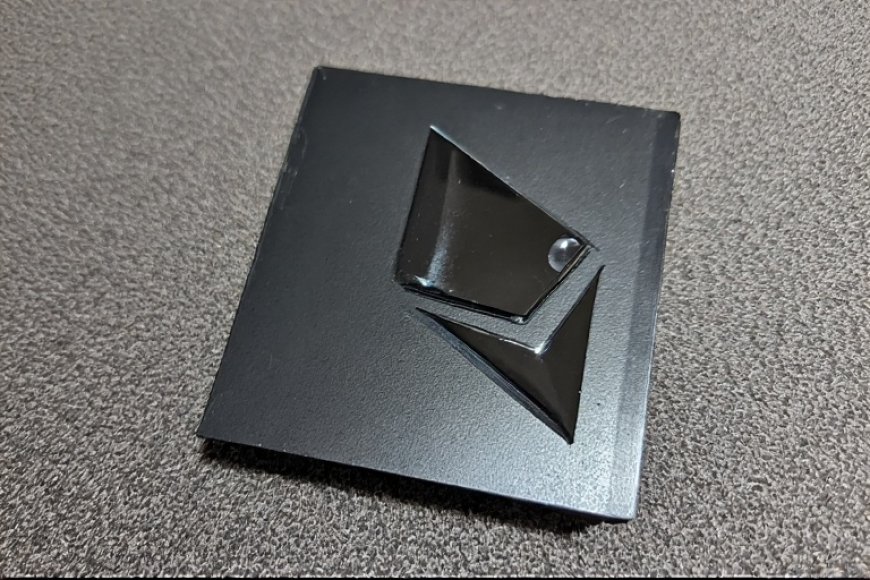Ethereum Staking for Beginners: A 2025 Starter Guide to Earn Passive Income with ETH
Curious about Ethereum staking? This beginner's guide for 2025 shows you how to earn passive income with ETH in simple steps, even with no technical knowledge.

Introduction to Ethereum and Passive Income
Ethereum is the second-largest cryptocurrency in the world, known for its smart contract functionality and vibrant ecosystem. But beyond just buying and holding ETH, many investors are now earning passive income by staking their tokens.
Passive income in crypto simply means earning regular returns without selling your assets. Ethereum staking has emerged as one of the safest and most rewarding ways to achieve this, especially after the Ethereum network moved from mining to staking in its 2.0 upgrade.
What is Ethereum Staking and Why Does It Matter?
Ethereum staking is a process where you lock up your ETH to help validate transactions and secure the network. In return, you earn ETH rewards similar to interest.
Ethereum used to run on Proof of Work (PoW), but as of 2022, it fully transitioned to Proof of Stake (PoS). Instead of miners solving puzzles, validators are chosen to propose blocks based on the ETH they've staked.
This system:
-
Lowers energy usage
-
Makes the network faster
-
Allows anyone to participate in network security
Key Ethereum Staking Terminology Explained
Lets break down a few terms that often confuse beginners:
-
Validator: A user who stakes ETH to help process transactions.
-
Epoch: A unit of time on the Ethereum blockchain.
-
Slashing: A penalty for validators who act maliciously or go offline.
-
Staking Pool: A group of users combining ETH to stake together.
-
Liquid Staking: Staking that gives you a tradable token like stETH while earning rewards.
Different Ways to Stake Ethereum in 2025
Theres more than one way to stake ETH, depending on how much you have and your technical skills.
? 1. Solo Staking (32 ETH Required)
-
Set up a validator node.
-
Requires hardware, software, and uptime management.
-
High rewards, high responsibility.
? 2. Pooled Staking
-
Join others using platforms like Rocket Pool.
-
Only need 0.01 ETH to start.
-
Rewards are shared among participants.
? 3. Exchange Staking
-
Use Binance, Coinbase, Kraken, etc.
-
One-click staking with no tech setup.
-
Lower rewards due to platform fees.
? 4. Liquid Staking
-
Use services like Lido Finance.
-
Stake ETH and receive a liquid token (e.g., stETH) in return.
-
Flexibility to trade or use in DeFi.
How to Start Staking ETH in Under 30 Minutes
Heres how a complete beginner can stake ETH quickly in 2025:
-
Choose a platform Use Coinbase, Binance, or Lido.
-
Deposit your ETH Make sure your wallet is funded.
-
Click Stake Follow the simple interface instructions.
-
Track your rewards Monitor your APY and performance.
Thats it! No complex nodes, no programming.
Best Platforms to Stake ETH Without Technical Knowledge
Here are beginner-friendly platforms:
| Platform | Minimum ETH | Ease of Use | Liquid Option? |
|---|---|---|---|
| Lido | 0.01 ETH | ????? | Yes (stETH) |
| Coinbase | Any amount | ????? | No |
| Binance | 0.1 ETH | ????? | Yes (BNB-based) |
| Rocket Pool | 0.01 ETH | ????? | Yes (rETH) |
Pro Tip: Beginners should avoid direct validator setup unless you're tech-savvy.
How Much Can You Earn from Ethereum Staking?
Your staking earnings depend on a few key factors:
-
Total ETH staked on the network
-
Validator performance and uptime
-
Staking method (solo, pool, liquid, or exchange)
? Estimated Annual Percentage Yield (APY) in 2025
| Method | APY Range |
|---|---|
| Solo staking | 4.5%5.5% |
| Staking pools | 4.0%5.0% |
| Exchange staking | 3.0%4.0% |
| Liquid staking (e.g. stETH) | 3.5%4.5% |
Rewards are paid in ETH, and some platforms offer compounding, where your earned ETH is automatically restaked to boost earnings over time.
What Happens When You Stake Ethereum?
When you stake ETH, heres what goes on behind the scenes:
-
Your ETH is locked in a smart contract or platform wallet.
-
The network selects validators at random to propose and attest to new blocks.
-
Validators earn rewards for being online and honest.
-
You receive a portion of those rewards based on your share of the staked ETH.
Risks to Know:
-
Slashing: If a validator misbehaves, a portion of ETH can be lost.
-
Downtime penalties: Validators who go offline miss rewards.
-
Smart contract risk: Especially in liquid staking services.
Liquid Staking vs Locked Staking: Whats the Difference?
? Locked Staking
-
ETH is locked and cannot be used or traded until the unbonding period ends.
-
Better for long-term holders.
?Liquid Staking
-
You receive a tokenized version of your staked ETH (like stETH).
-
You can trade, lend, or use it in DeFi apps.
-
-
More flexible, ideal for users who want to earn staking rewards while keeping liquidity.
| Feature | Locked Staking | Liquid Staking |
|---|---|---|
| Tradable | ? | ? |
| Risk Level | Low | Medium |
| Reward Access | Locked | Instant |
| Use in DeFi | ? | ? |
Tips for Maximizing Your ETH Staking Rewards
Heres how beginners can earn more from staking ETH:
-
? Choose low-fee platforms like Rocket Pool or Lido.
-
? Stake during bull markets to maximize ETH value.
-
? Reinvest your rewards through compounding.
-
? Use liquid staking tokens in DeFi to generate extra yield.
-
? Diversify staking methods use a mix of platforms to reduce risk.
Even small improvements in your strategy can significantly increase long-term returns.
Common Mistakes Beginners Make with Ethereum Staking
Dont fall into these beginner traps:
-
Staking on unknown or shady platforms You could lose everything.
-
Ignoring fees and lock-up terms Some exchanges have hidden rules.
-
Thinking rewards are always guaranteed Network performance and ETH price affect returns.
-
Forgetting about taxes Yes, staking income is taxable in many countries.
-
Losing access to your wallet Always back up your recovery phrases!
Tax Tips for Ethereum Stakers in 2025
In most jurisdictions, staking rewards are treated as income at the time of receipt. You may also owe capital gains tax when selling your earned ETH or liquid staking tokens.
? Tips to Stay Compliant:
-
Use tracking tools like Koinly, TokenTax, or CoinTracker.
-
Log the date, amount, and value of each reward.
-
Work with a crypto-savvy accountant to avoid surprises.
Tax laws vary, so always consult local regulations or a tax advisor.
Staking ETH Securely: Protecting Your Assets
Security is everything in crypto especially when your ETH is locked or generating yield.
? Top Safety Practices:
-
Use a hardware wallet (e.g., Ledger, Trezor).
-
Avoid public Wi-Fi when accessing staking platforms.
-
Enable 2FA and anti-phishing codes on exchanges.
-
Double-check smart contract addresses before using DeFi apps.
Never share your seed phrase, and always verify links to avoid phishing scams.
Ethereum Staking in the Future: What to Expect
Ethereum staking is only getting started. In the coming years, you can expect:
-
More liquid staking options with integrated DeFi features.
-
Higher participation from institutional investors.
-
Layer 2 integrations to allow faster and cheaper staking.
-
Decentralized staking infrastructure to reduce centralization risks.
With growing innovation, staking could become the standard for ETH holders both casual and professional.
FAQs About Ethereum Staking for Beginners
1. Is staking Ethereum risky for beginners?
It's relatively safe if you use trusted platforms, but you should understand the risks like price volatility and slashing.
2. How much ETH do I need to stake?
You can start with as little as 0.01 ETH using pooled or liquid staking platforms.
3. Can I unstake my ETH at any time?
Yes, but unstaking periods vary by platform. Liquid staking options like stETH offer instant liquidity.
4. Do I need to run a validator node?
No. Thats only needed for solo staking with 32 ETH. Beginners can use custodial or DeFi platforms.
5. Whats the best ETH staking platform for beginners?
Lido and Coinbase are great starting points for their ease of use and low entry barriers.
6. Can I lose my ETH while staking?
Yes, in rare cases due to platform hacks, smart contract bugs, or slashing penalties. Always use secure and reputable services.
Final Thoughts: Should You Stake Ethereum in 2025?
If you're new to crypto or Ethereum, staking ETH is one of the best ways to grow your investment without trading.
You can:
-
Earn rewards
-
Support the network
-
Stay liquid using stETH or rETH
-
Participate in DeFi with less risk
As long as you start with the right platform and understand the basics, Ethereum staking in 2025 is a smart and secure entry into crypto-based passive income.










































